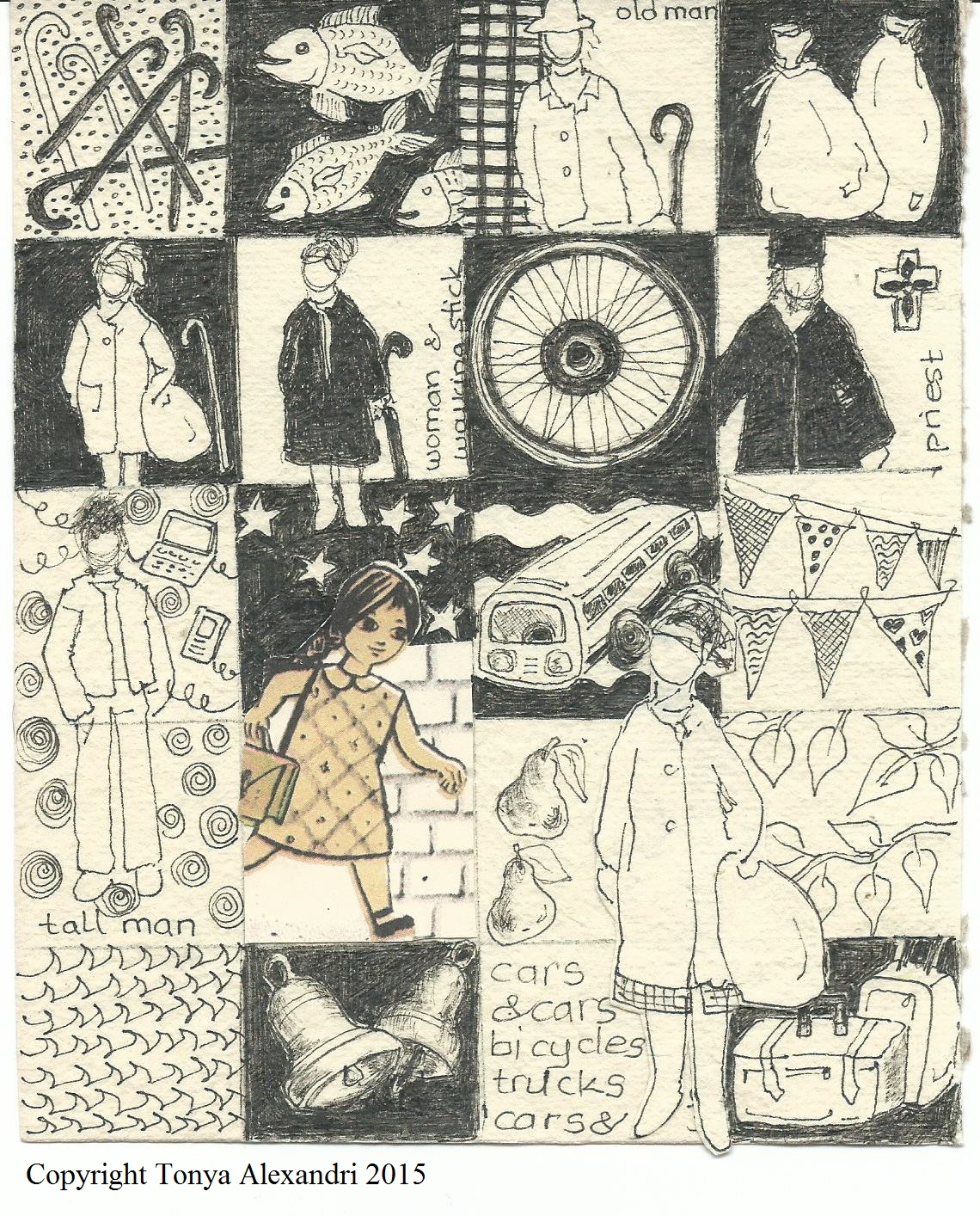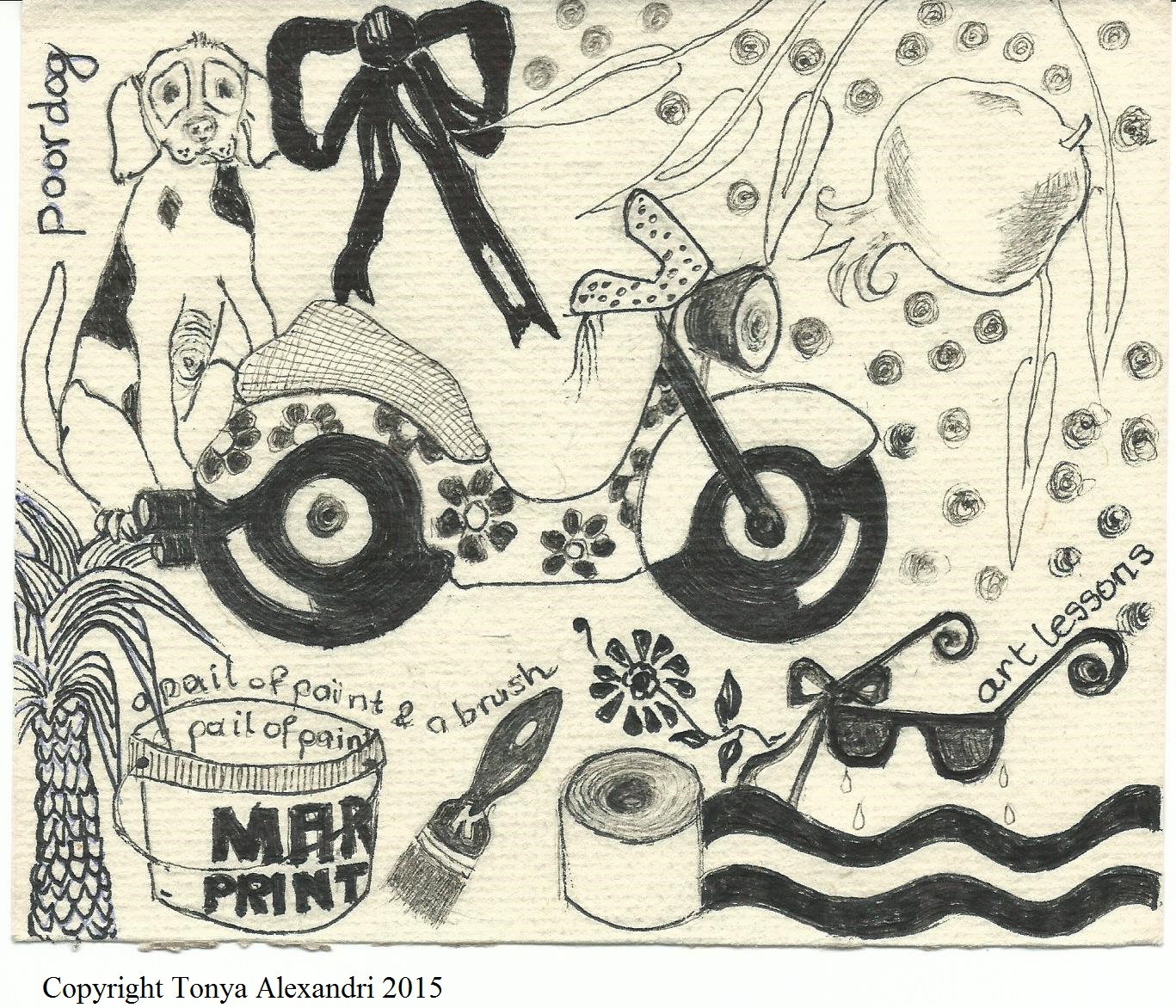In the family I grew up there were countless brothers, sisters and cousins on the mother’s side. These doodles, created after a drive into town and a short walk in the countryside yesterday, are dedicated to Aunt Anna and Cousins Paul R., Chris, Yiota and Matina G. for the memories……
Doodles in ink on book pages
A. The first page, which contains a favourite poem by Robert Frost, is from the poem anthology The Nation’s Favourite Poems του BBC (1998). This book was given to me by a couple, Kostas L. and Michelle B., who worked for me as a teacher at the English School I ran in the past, in return for pet-sitting when they were away.
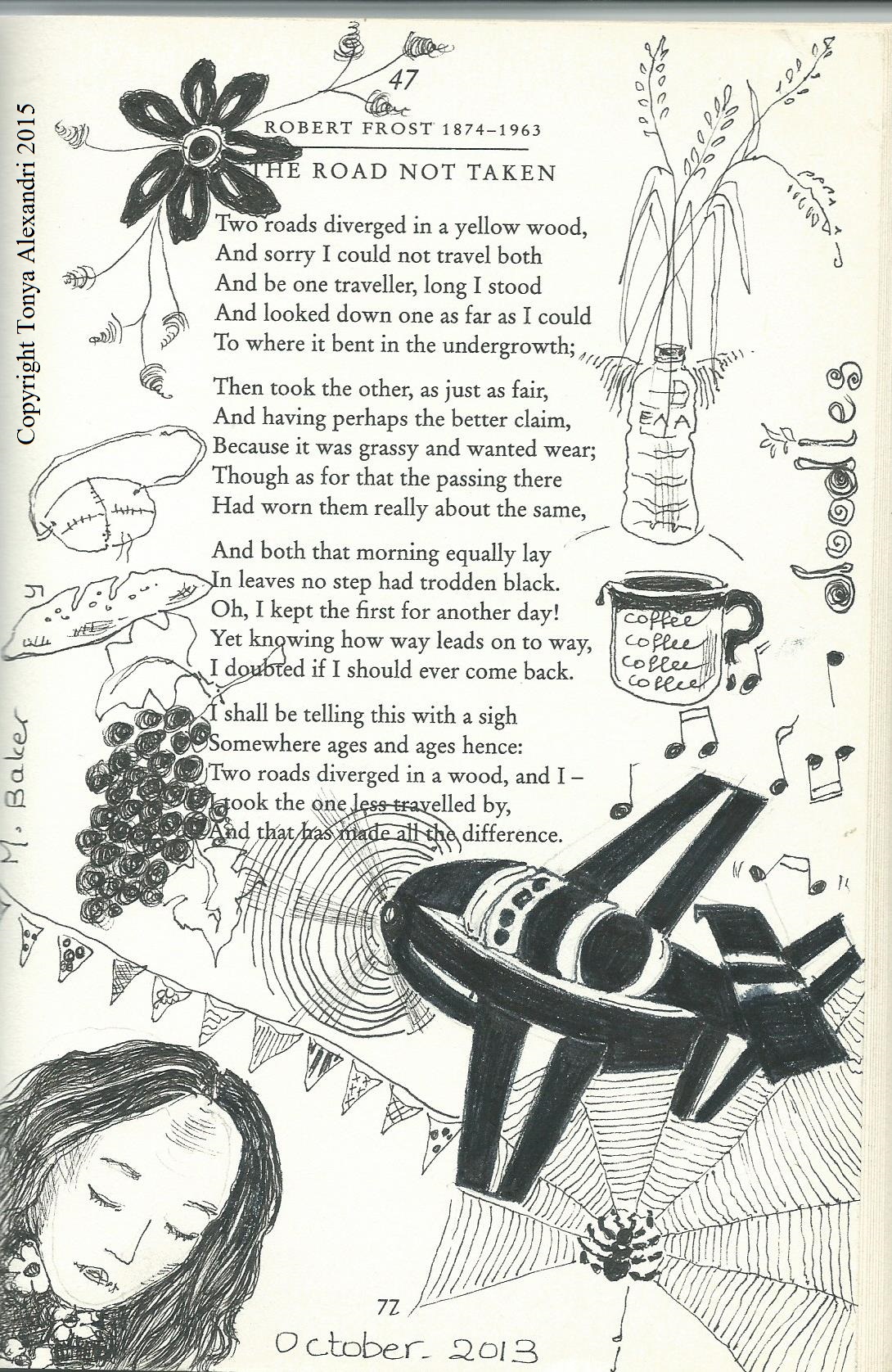 B. This second page is from my own book Let me be (2008)
B. This second page is from my own book Let me be (2008)
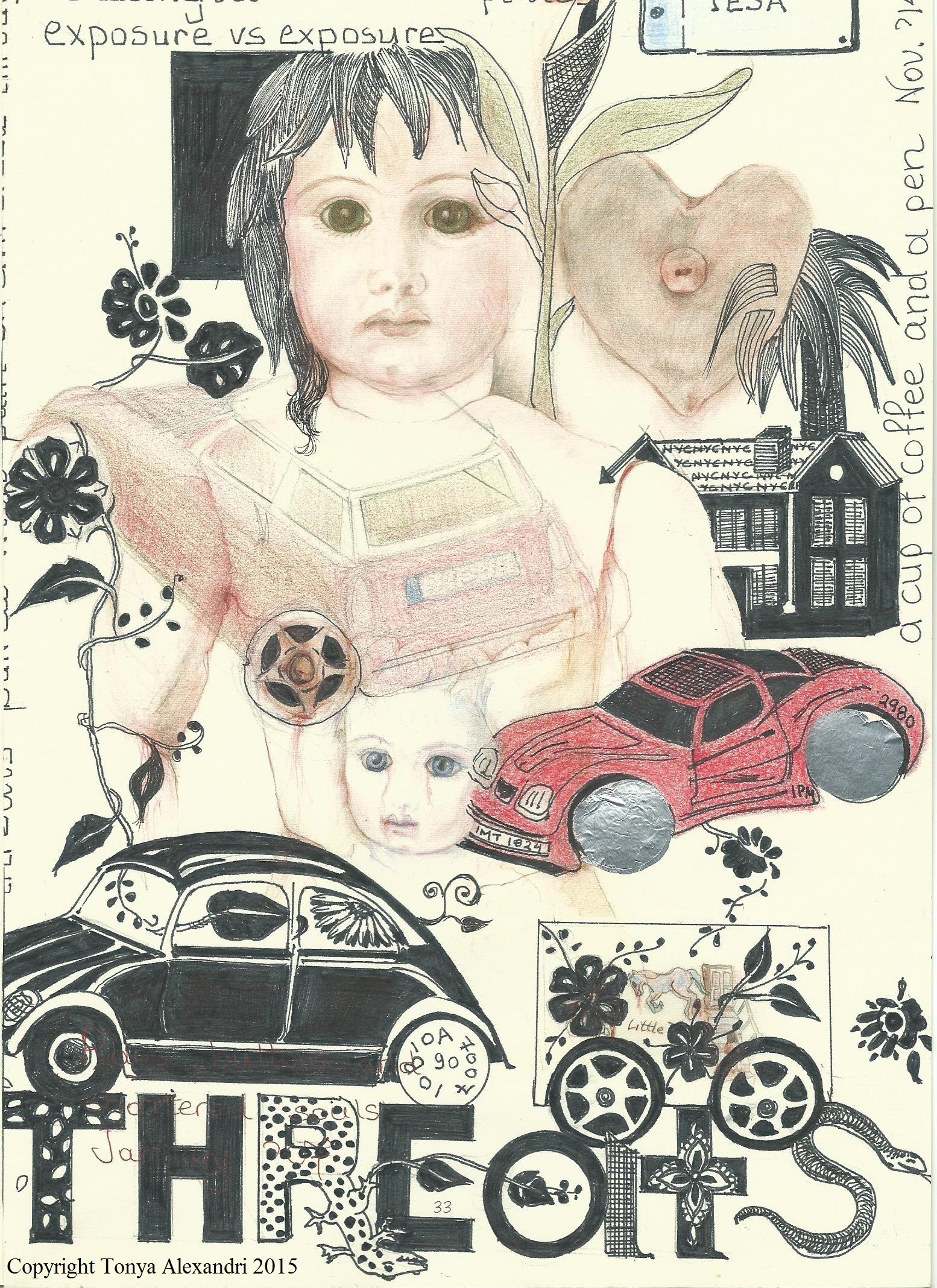 Doodling is meditative in nature and has soothing, self-regulating and relaxing potential. Although doodles are often created while we are preoccupied with something else or when we are bored and unfocused, perhaps waiting for a means of transport, speaking on the phone, during breaks or lessons, while watching TV or trying to study, it may not always be so, because one can engage with doodling as a form of quick, spontaneous art to enhance problem solving and processing of information. The following ideas are a brief summary of Malchiodi’s article: © 2014 Cathy Malchiodi, PhD, LPCC, LPAT, ATR-BC (link is external). She makes reference to Sunni Brown’s claims that doodling is ‘deep thinking in disguise and that it is a simple, accessible tool for problem-solving in general’. She also refers to research findings that indicate that doodling increases memory retention. Cathy Malchiodi suggests that one can achieve cortisol reduction via doodling. She also refers to Zentangle®, which is a purposeful, structured form of drawing, similar to doodling, and which also seems ‘to support mindful states of being’. It consists of a series of repetitive straight lines, curves and dots drawn on a small square and is much more focused and deliberate, but still allows freedom in the choice of patterns, lines, shapes and shading.
Doodling is meditative in nature and has soothing, self-regulating and relaxing potential. Although doodles are often created while we are preoccupied with something else or when we are bored and unfocused, perhaps waiting for a means of transport, speaking on the phone, during breaks or lessons, while watching TV or trying to study, it may not always be so, because one can engage with doodling as a form of quick, spontaneous art to enhance problem solving and processing of information. The following ideas are a brief summary of Malchiodi’s article: © 2014 Cathy Malchiodi, PhD, LPCC, LPAT, ATR-BC (link is external). She makes reference to Sunni Brown’s claims that doodling is ‘deep thinking in disguise and that it is a simple, accessible tool for problem-solving in general’. She also refers to research findings that indicate that doodling increases memory retention. Cathy Malchiodi suggests that one can achieve cortisol reduction via doodling. She also refers to Zentangle®, which is a purposeful, structured form of drawing, similar to doodling, and which also seems ‘to support mindful states of being’. It consists of a series of repetitive straight lines, curves and dots drawn on a small square and is much more focused and deliberate, but still allows freedom in the choice of patterns, lines, shapes and shading.
‘When you are a child you are yourself and you know and see everything prophetically. And then suddenly something happens and you stop being yourself; you become what others force you to be. You lose your wisdom and your soul’ (Jean Rhys)
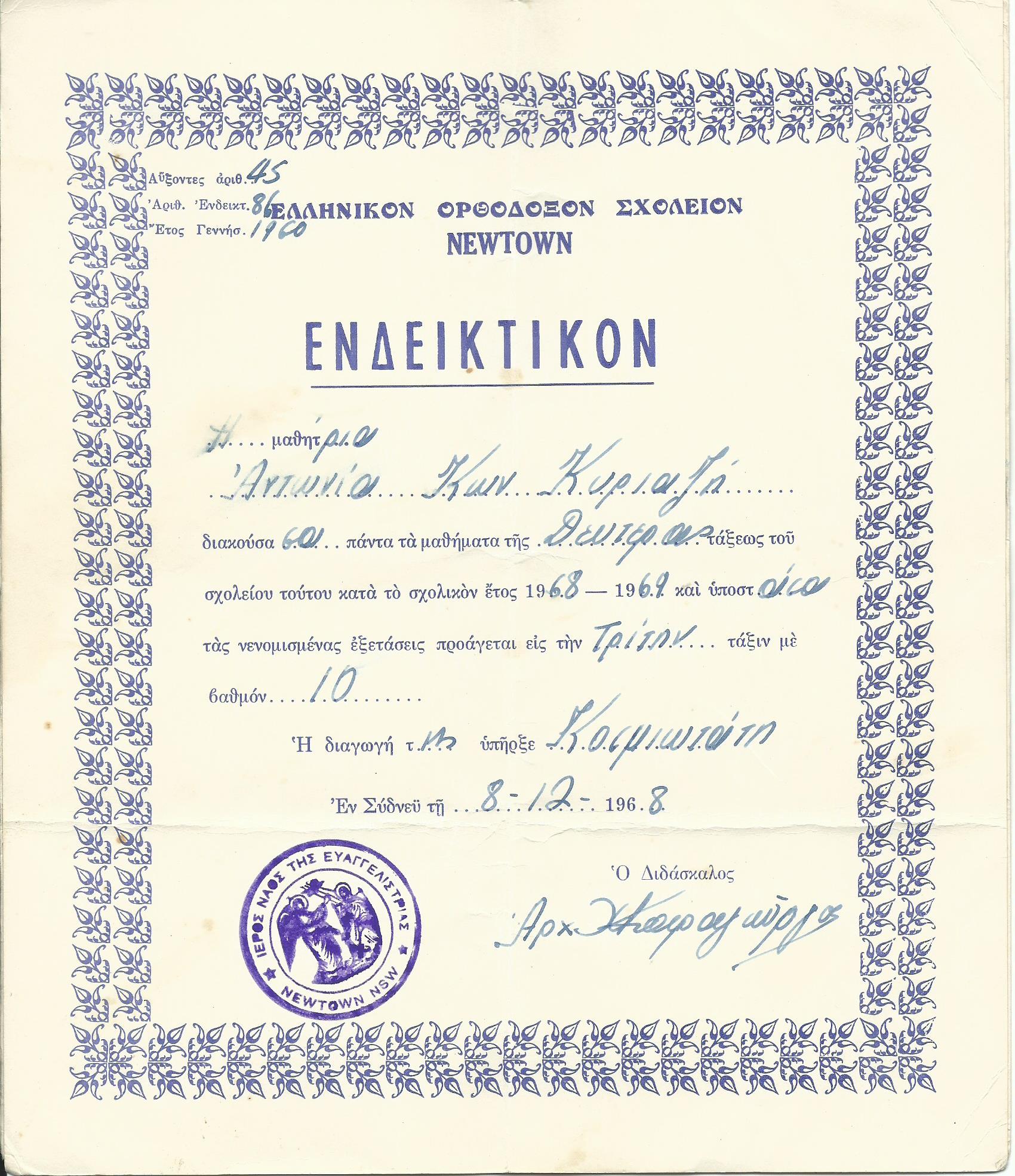 Continued from previous post……
Continued from previous post……
Discriminatory and racist practices can be intimidating and forceful, but they can also be more subtle. A subtle form of these practices may concern difficulties in obtaining official papers or/ and various inconsistencies and contradictory information both in official documents and /or school reports and so on. These difficulties and inconsistencies often reflect and are related to the deeper reasons and explanations for a lot of injustices and suffering. For instance, not every citizen needs to apply for a simple marriage certificate over and over, only to receive useless copies with chunks of information concerning identity missing. Neither is one, refused citizenship despite their right to it – at least according to official documents – and also since nationality is something that cannot be taken away, and so on.
The class report posted above was given to me from the Greek Orthodox School I attended in Australia for completing second grade successfully. My birth date is wrong, at least according to the birth certificate I have in my possession. What’s more, I have another school report of the same school year, from the same church, certifying that I have complete third grade, with another birth date on it. Perhaps here I need to explain that often children that grew up in Greek immigrant households in Australia back then attended part-time Greek schools, usually run by the church, in the evenings. Since morning school finished at 3:30 classes usually started at about 5:00 and carried on till about 7:00 or 8:00. It seems highly improbable that as a young child I could have managed to attend school in the morning up until 3:30 and two different classes of the same subject in the evening, by the priest-school teacher, who taught me harsh discipline and fear, as well as, how to read and write in Greek.
Quotes
‘You imagine the carefully pruned, shaped thing that is presented to you is truth. That is just what it isn’t. The truth is improbable, the truth is fantastic; it’s in what you think is a distorting mirror that you see the truth’ Jean Rhys (1890-1979)
‘The search for identity is very important. If you look at the sort of techniques used in concentration camps, they were designed to take away people’s identity. It is the ultimate indignity’
(Dr Ron Sinclair, former child migrant, cited in Empty Cradles by Margaret Humphreys – Corgi Books)
And lyrics
As I was writing the short text above I heard a Greek song on youtube, with lyrics and music by Dionysis Tsaknis, referring to issues of identity, belonging and homeland from the perspective of a gypsy
I have no place, I have no hope
No country (homeland) will ever lose (miss) me
Αnd with my hands and heart
I build tents in my dreams
And then I discovered another interesting performance in another language by a previously unknown to me, singer, Yasmin Levy. Enjoy. https://www.youtube.com/watch?v=9U4XY-W6MmQ

